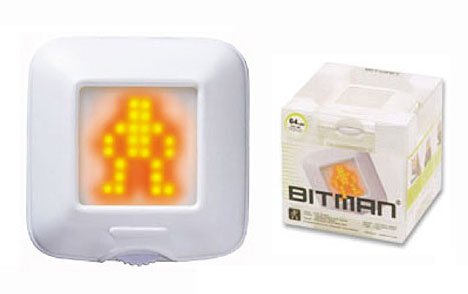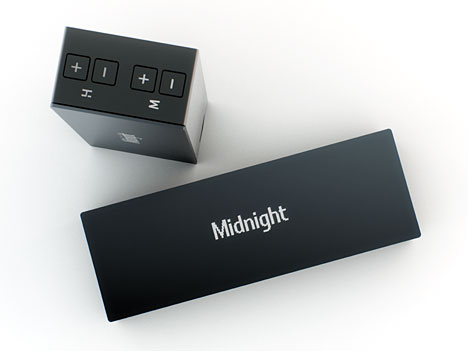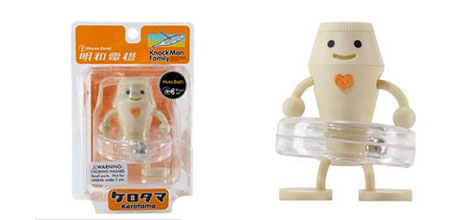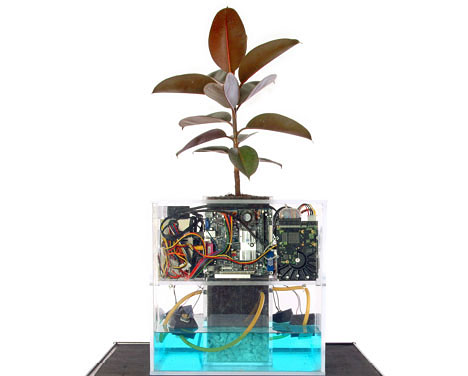as you can see from the picture below .

And this is the video of trying out my theresynth v0.1 prototype. Still under development.










 Max/Msp environmet.
Max/Msp environmet. vvvv environment
vvvv environment




 The Bitman project by Maywa Denki represents the quintessential Device Art object.
The Bitman project by Maywa Denki represents the quintessential Device Art object. Lebedev is a digital clock that displays time in phrases, encouraging users to think of time in more human terms.
Lebedev is a digital clock that displays time in phrases, encouraging users to think of time in more human terms. Knockman by Maywa Denki, is part of a family of wind up toys that represent the "cute factor" in a lot of today's Device Art work in Japan.
Knockman by Maywa Denki, is part of a family of wind up toys that represent the "cute factor" in a lot of today's Device Art work in Japan. Spore, by SWAMP (Studies of Work Atmospheres and Mass Production) - an art collective comprised of Douglas Easterly and Matt Kenyon, is a "self-sustaining ecosystem for a rubber tree plant purchased at Home Depot
Spore, by SWAMP (Studies of Work Atmospheres and Mass Production) - an art collective comprised of Douglas Easterly and Matt Kenyon, is a "self-sustaining ecosystem for a rubber tree plant purchased at Home Depot








The Theremin digital instrument (it is?), was invented in 1920 by Russian physicist introduce as one of the world's first electronic digital instruments. It's the only instrument that is played without being touched and conducted using motion of the user. The proximity of the hands to the two antenna determines the pitch and volume of the sounds produced.
You've might be likely heard the eerie Theremin before - they became popular in those 1950's science fiction movie soundtracks that sound so cheesy today(even i just realized that)
While Theremins became a popular attraction, they remain pretty rare (I've only seen a Theremin on a site only, as also been heard for the first time). A new Theremin costs about USD$450, so I'm not likely to get one as a stocking stuffer, but luckily thanks to the arduino and the inspiration of sensor tracking with some references from the net, I've been able to create my own(with some push of luck, please god *crossing finger*)
For some guidance and to browse a type of theremin :
http://www.theremin.info/-/viewpub/tid/9/pid/10
OK enough a briefly introduction about theremin, is not like im goin to tell the whole system of theremin, if so, i might just copy and paste and it doesn't seem likely im using my own interpretation. I hope your brain will capture the important subject here, which theremin - a digital instrument and played using hand gesture. :)
theremin info : http://en.wikipedia.org/wiki/Theremin (duhh there's on wiki dude)
Installation on physical computing
Physical computing
Physical computing - This is the subject that I really felt was interesting at first, and chill enough to use it as my projects platform. Essentially, physical Computing is an approach to learn on how humans can communicate through computers that starts by allowing the perception on how humans express themselves literally. For instance, we take the human body as a given, and attempt to design computing applications within the limits of its expression.
Typical personal computer is attached with devices such as keyboard, mouse, and monitor. But with physical computing many contents and expressions can be experienced from every aspect using a suitable platform to create the communication. But of course every pros has cons, the standardized input/output have limitation to create the interaction.
The development involved on how a computer converts the changes in energy given off by human bodies (in the form of sound, light, motion, and other forms - sensory) into changing electronic signals that it can read and interpret. The main brain to give the soul in physical computing and controlled the whole system is by using microcontrollers is the core intelligence that let the communication exists.
 arduino NG microcontroller board
arduino NG microcontroller board
Microcontroller boards
“A microcontroller can be considered a self-contained system with a processor, memory and peripherals and can be used as an embedded system” wiki source.
It is subjected as a small computer system on a single integrated circuit, containing its own processor core, memory and programmable input/output. Complicated isn’t it? In the simple and understandable form, microcontroller is a complete mainboard/motherboard that you commonly seen in your personal computer, the intelligent parts is, it has build altogether in one board and its ten times small than your regular motherboard. The software that used to programmed the input/output is just like bios system but it’s been called IDE, or in simplest word, processing software.
There are many other microcontrollers and microcontroller platforms available for physical computing. Parallax Basic Stamp, Netmedia's BX-24, Phidgets, MIT's Handyboard, and many others offer similar functionality. As for my project I intend to use Arduino as my platform for microcontroller.
Some of the past senior is really exciting in elaborating the this arduino thingy. I will put it as my references : cheesehed